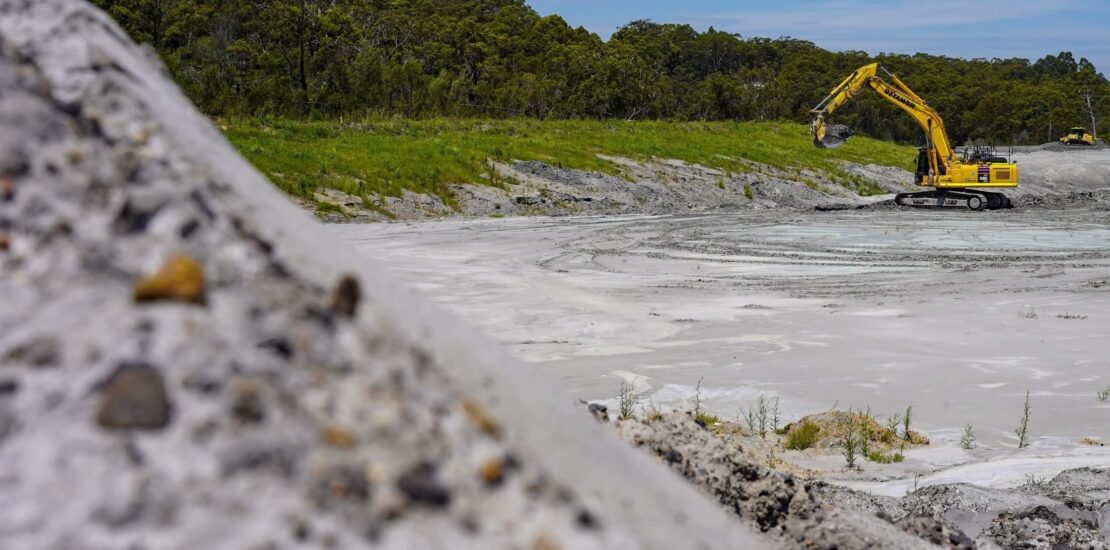- 20 August 2024
- Posted by: nemcatgroup
- Category: News

Vecor Technologies is transforming fly ash into high-performance additives for paints, coatings and other materials, creating value from a problematic by-product of coal-fired power.
Fly ash is the fine-sized lightweight residue that results from coal combustion in power stations. Fly ash is not just a waste product but an in-demand resource for the construction industry, where it is commonly used as a cement additive to improve the durability and workability of concrete mixes.
Challenges with Fly Ash
Despite its usefulness to the construction industry, vast quantities of fly ash remain unused, stored either in ash “ponds” or buried. Fly ash present in these storage forms can pollute waterways, drinking water, and the air.
Research and Collaboration
For many years, UNSW researchers have been working with Vecor Technologies to convert waste fly ash into advanced products for a range of industries. Building upon technologies originally spun out of UNSW to develop building materials, fly ash has demonstrated potential application as advanced materials for use in a variety of sectors. Currently, Vecor and researchers at UNSW are looking into its use as a low-cost additive in paints and coatings, where it could offer benefits in terms of structural, thermal, chemical, and optical properties as well as economic and environmental advantages from its utilisation.
Vecor Tecnologies has invested in dedicated research laboratories to explore technical innovation and product development led by UNSW academics Associate Professor Pramod Koshy and Professor Charles Sorrell.

“While Vecor’s history of fly ash R&D with our UNSW colleagues was concentrated on more conventional products, we are now exploring the modification of fly ash to facilitate expansion into new areas of high-value products,” said Vecor CEO Mark Ramsey.
Extracting high value from waste
“Of the estimated 400 million tonnes of fly ash that have been stockpiled globally in landfill and tailing ponds, only 15% of this resource has been utilised, with almost half of this fraction going to the cement and concrete industries and the rest to geotechnical applications,” Professor Sorrell said, adding that most people look at fly ash as a low-grade waste material.
“In reality, fly ash is a ceramic raw material with unique chemical and physical characteristics,” he said. “Vecor’s goal is to explore how we can engineer fly ash in precise directions for a wide range of unexpected applications.”
For example, Titanium Dioxide (TiO2) is the most widely used pigment globally, with a total global market of approximately $23 billion USD p.a. (2021). It is used primarily for its white colouring properties, but its production is extremely carbon intensive. To address this, researchers are developing processes to valorise fly ash, making it a potential replacement for TiO2 in plastics, ceramics, paints and architectural coatings.
The researchers are working on developing a production process that involves less expensive and carbon-intensive steps than the TiO2 production.

The team’s vision is to show how this low-cost, waste material can be used as the basis for a range of new products for use in a host of high-performance products for which it has never been considered or trialed.
Associate Professor Koshy said that each application has very specific demands placed on both the raw materials and their processing.
“Our fly-ash research collaboration with Vecor demands a highly iterative approach to problem-solving, and this is what keeps the work not only novel but also interesting!”

Throughout the TRaCE project, the objective is to process fly ash material into valuable products. If successful, this initiative could provide a blueprint for transforming fly ash worldwide, offering a model for sustainable waste management and resource recovery. Success in this project has the potential to reduce emissions significantly in a sector that is challenging to decarbonise. By enhancing sovereign capabilities and reducing reliance on imports, this initiative could also create quality jobs in regions historically dependent on coal, driving both economic and environmental benefits.
Learn more about how Vecor Technologies uses abundant and waste materials to create products that are environmentally positive.
